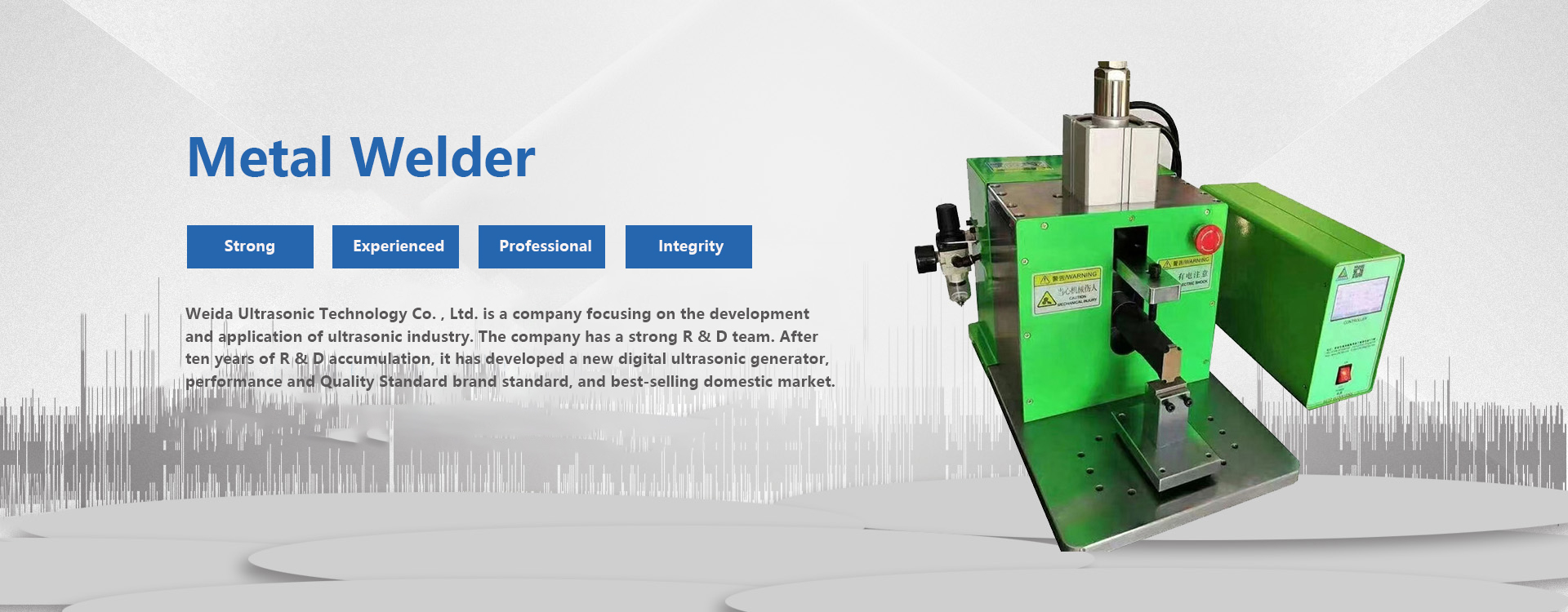Ultrasonic plastic welding is a kind of plastic welding method based on ultrasonic vibration energy. Ultrasonic plastic welding equipment mainly includes ultrasonic generator, control circuit and transducer, amplitude converter, welding head and transmission system. First, the ultrasonic generator converts industrial alternating current into overclocking current to stimulate the acoustic system and produce mechanical vibration of the same frequency, which is amplified by the horn and the welding head and transmitted to the welded surface of the plastic part. Through the friction between plastic molecules, the vibration energy is converted into heat energy, so that the welding surface is fused. Ultrasonic plastic welding machine is recognized by more and more factories because of its high efficiency, simple operation, safety, non-toxic, strong application and other advantages, and the traditional manual bonding and glue process has been gradually replaced. Moreover, the ultrasonic plastic welding machine has a variety of styles and types, which can better adapt to the welding applications of different products. But what points should be paid attention to when using ultrasonic plastic welders? Take a look at the experience of ultrasonic welding machine manufacturers for many years to share.
It is understood that most ultrasonic plastic welding machines are relatively large machines and equipment, so what matters should be paid attention to in the process of use in order to better ensure the efficiency of production? Take a look at the following points summarized by ultrasonic welding machine manufacturers:
1. Do not place the ultrasonic plastic welding machine in a humid or high temperature place, do not put liquid items on the machine, so as not to leak on the machine, usually pay attention to cleaning the machine, but pay attention not to use liquid to clean.
2. The ultrasonic welding machine directly uses 220v mains power, so the ultrasonic welding machine should be properly grounded before powering on, and the grounding resistance should be less than 4 ohms.
3. If the mains voltage changes by more than 10% during the application process, the ultrasonic welding machine should be equipped with an AC regulator to ensure the efficient and safe operation of the ultrasonic welding machine.
4. After electrification, do not place your hand under the upper welding mold to avoid high-frequency vibration and high voltage damage. If there is any danger during the automatic operation, please press the emergency lift button immediately.
5. When the ultrasonic sound is generated, the upper welding die shall not contact the lower welding die, fixture and workbench to avoid damage to the machine parts.
6. Do sonic detection before ultrasonic welding, especially when replacing the ultrasonic welding head mold, this operation can not be neglected.
7. The transducer and amplifier shall not rotate more than 360 degrees to avoid disconnecting the high voltage line.
8. The ultrasonic welding head mold should be professionally designed, processed and adjusted, otherwise it is easy to damage the ultrasonic transducer system of the welding machine during use.
9. The pneumatic system of the ultrasonic welding machine is plastic products, and the pressure of the extraterrestrial air source applied should not be greater than 0.5Mpa, otherwise it will cause blasting or cause burning of the machine.
10. The frequency decrease during ultrasonic welding will produce some noise, and it is recommended that long-term operators should wear ear protectors.
11. If 1/2 of the water in the air filter does not flow, it should be removed at any time. If there is too much water, you need to clean the water in the air compressor from time to time.
12. The main parameters of ultrasonic plastic welding are ultrasonic frequency, welding power, amplitude, welding pressure and welding time. From a single parameter point of view, the general ultrasonic welding frequency is about 10kHz-40kHz. The ultrasonic frequency of welding does not have a great direct impact on the quality of welding, but if the welding frequency is not coordinated with the fundamental frequency of the welding machine's variable amplitude rod, it will cause harsh noise, and the large ultrasonic noise generated by it is very unfavorable to the fixing of the workpiece, and even cause the workpiece to fly out of the accident. At the same time, the choice of welding frequency should also consider the resonant frequency of the entire system to avoid resonance.


 中文(简体)
中文(简体) 

 Wechat
Wechat